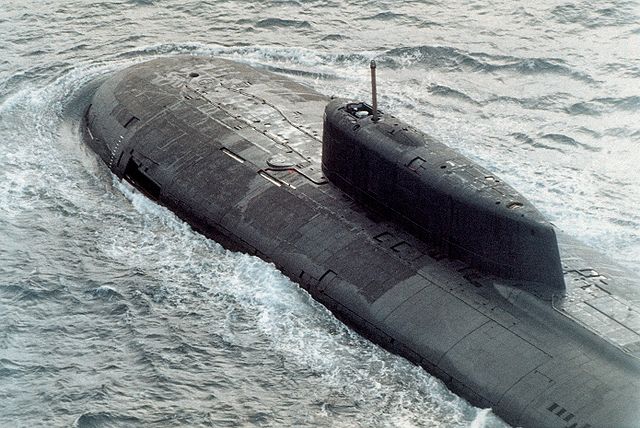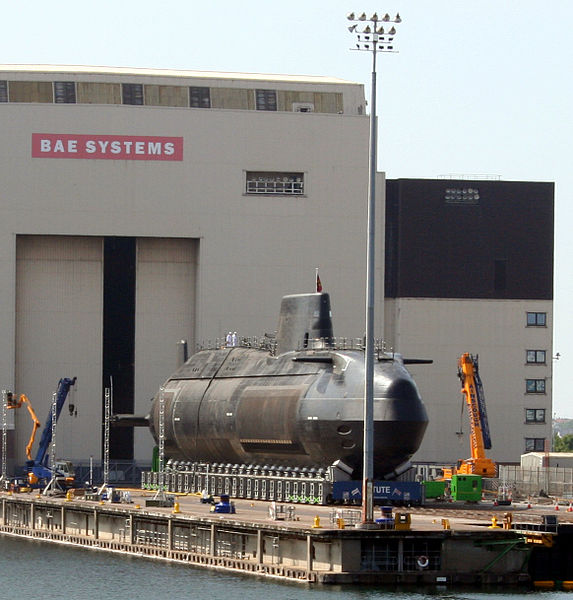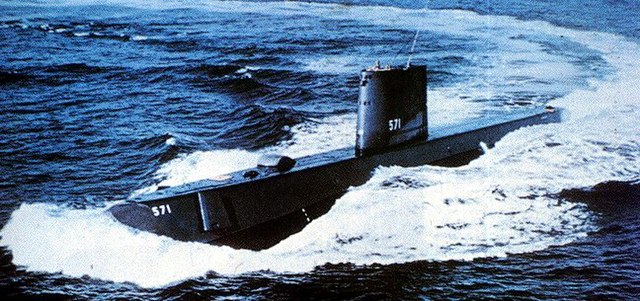The Oscar class, Soviet designations Project 949 Granit and Project 949A Antey, are a series of nuclear-powered cruise missile submarines designed in the Soviet Union for the Soviet Navy. First built in the 1970s, six remain in service with the Russian Navy. Two other vessels were slated to be modernized since at least 2017 as Project 949AM, to extend their service life and increase combat capabilities but it is unclear whether work continues as of 2023.
K-150 Tomsk in Vilyuchinsk
This picture clearly displays the arrangement of the hatches in the hull above the missile tubes, on either side of the dorsal fin. Also shown is the opening for the forward hydroplane (currently folded in), as well as the bulge on the top of the fin under which the rescue capsule is located. Although partially obscured by shadow, the seam between the capsule and the fin is faintly visible.
K-186 Omsk during 2008 Naval Parade in Vladivostok
K-266 Orel after completion of its overhaul
A nuclear submarine is a submarine powered by a nuclear reactor, but not necessarily nuclear-armed. Nuclear submarines have considerable performance advantages over "conventional" submarines. Nuclear propulsion, being completely independent of air, frees the submarine from the need to surface frequently, as is necessary for conventional submarines. The large amount of power generated by a nuclear reactor allows nuclear submarines to operate at high speed for long periods, and the long interval between refuelings grants a range virtually unlimited, making the only limits on voyage times being imposed by such factors as the need to restock food or other consumables.
British Astute-class submarine
USS Nautilus, the first nuclear-powered submarine.
The smallest nuclear-powered submarine, the U.S. Navy's NR-1.
The nuclear-powered VMF Typhoon-class submarines were the world's largest-displacement submarines.








